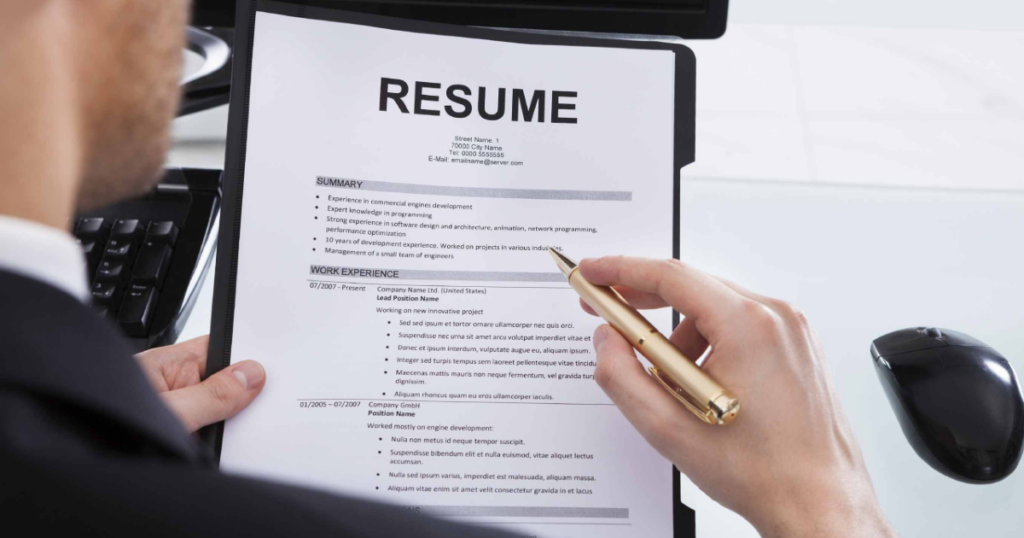
A resume is one of the most important pieces of paper you'll ever write. It can be a determining factor in whether or not you get an interview, and it really needs to look good! In this article, we'll provide tips on how to make your resume stand out from other applicants, and give examples of three common resume types: Traditional, chronological, and functional.
When deciding which resume format you should use, it's important to consider what your most marketable skills are. Different resumes are better for different types of careers, so it's best to choose the resume format that fits you, and aligns with the type of work you want to pursue.
When choosing a format, keep in mind which one will increase your chances at an interview. Since there isn't really a wrong choice when picking between chronological, functional, or traditional formats, pick something that makes sense for your career trajectory.
For example: If you've worked at multiple jobs but still haven't figured out exactly where you fit in the working world, then use a functional resume; if you feel like putting all those random experiences on paper together without bringing extra attention to specific employers, then use a chronological resume; and if you believe that your most marketable skills should be at the top of the page, then use a traditional resume.
The following tips should be taken into consideration when creating any type of resume:
When writing your resume, try using the following types of resumes depending on your work experience:
A functional resume is a type of resume that emphasises the applicant's abilities and skills. It's often used by people looking to make a career change, or those who have gaps in their employment. A recent graduate without extensive professional experience can also benefit from this type of resume. If you've gained important skills and experiences in areas other than professional employment, such as school or mentorship, you'll also have an advantage with this format. By using this, employers can focus on a candidate's skills, such as any technical or soft skills needed for the position.
A chronological resume is a format that prioritises relevant professional experience and achievements. If you have a lot of years of experience in one professional path and have worked for many businesses or clients in the same sector, a chronological resume is your best bet. It's also critical that you have few or no gaps in your employment. This format is broken up into different sections. It shows what jobs you have before, and what you did when you were in them. It also tells how long you were on the job and what your responsibilities were. The chronological approach highlights key accomplishments throughout your career, making this sort of resume easy to follow, while also highlighting important abilities.
As the name suggests, it combines both chronological and functional resume types, allowing you to emphasise your skills and work experiences at one go. Due to the fact that more space could be used up with this type, you'll need to eliminate or reduce other sections such as interests, summary, and objectives.

The goal of formatting your resume is to create a one-page document that can be quickly scanned, is easy to understand instantly at a glance, and highlights your most relevant information.
In addition to using the correct resume format (make sure to see which works best for you), there are many other formatting tips & tricks you should keep in mind:
Formatting mistakes, extreme tenses, long paragraphs, lack of bullet points or numbers – these are sure-fire ways to lose your reader's interest fast, so make sure not to do them before sending it off.
Also, remember that every resume you send out is a reflection on yourself as a professional worker; take your time with this document because how it looks and reads is a big part of how your potential employer will perceive you.
This helps them see what skills and qualifications are most relevant to the position they're hiring for – getting rid of any fluff or irrelevant information makes sure their time isn't wasted.
If you're looking to land a new job, it's important that your resume reflects the type of work history an employer would want. For example, if you have had numerous short-term jobs in different fields but no long term employment, list one past experience first before listing each individual experience – this will allow employers to better see where these experiences fit into your career path from an outside perspective.
It's also vital that formatting mistakes and other errors don't go unnoticed by potential employers, as they can quickly lose interest in reading through resumes with typos or grammatical errors. If you're unsure which format style is best for your background, take some time to consider what skills are most relevant to the position being offered at their company before deciding on how best to structure your resume.